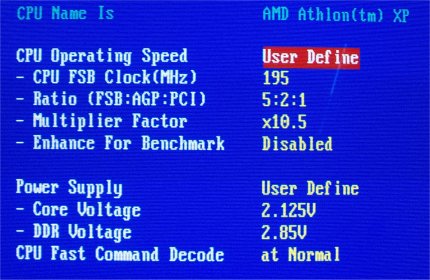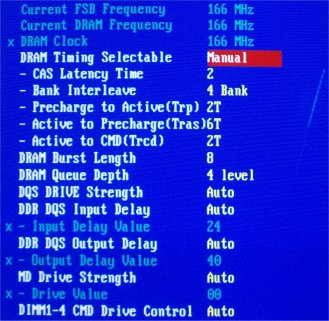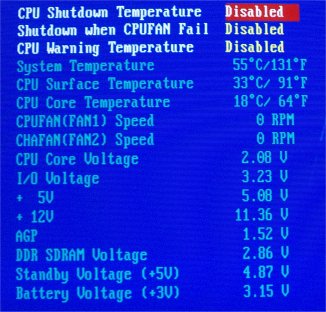BIOS
As usual, ABIT has included its famous Soft Menu III setup - which is an overclockers dream.
Here we see our usual overclocking favourites, such as multiplier control, FSB adjustments in 1 MHz intervals, AGP/PCI divider ratio's. Unusually for ABIT, they have included the option to really overvolt your CPU and memory. From the bios you can select up to 2.2V for the CPU and up to 3.3V for the memory, this is a great feature for the hard core overclockers - there is no longer a need to perform operations such as volt mod's.
There has been a bit of controversy about the 1/6th PCI divider option on KT400 boards. The option is there on earlier ABIT bios's, but it doesn't work - any attempt to use it results in a blank screen on boot up and the need to reset the CMOS. VIA have recently announced that the KT400 chipset doesn't support 1/6th dividers, even if the clock generators on the motherboard do. So bare that in mind that when your overclocking to 200 MHz FSB's; both the PCI and AGP bus is goin to be out of specification and you may have trouble with some cards.

Here we have a wide selection of memory timing options. Its best to leave the delay and drive strength options on auto...but you can gain noticeable performance boosts by adjusting the other timings. From here you can also select your DRAM clock to be asynchronous - again the gains from doing so are very little.

As always there is a PC Health menu under the BIOS Setup. Unlike previous socket A boards, ABIT have finally decided to make use of the onchip temperature diode, for a more accurate reading. However the system temperature sensor is placed too close to the hot switching power regulators - and hence gives a false reading of the internal case temperature. Since the board now uses the onchip thermal diode it can react quicker to a fault such as the heatsink retention clips breaking - which makes the CPU temperature shutdown system more useful.
The rest of the BIOS options are similar to other KT266/333/400 award bios setup's. The only differences being options to disable some of the onboard hardware (USB 2.0, firewire, audio, lan etc).









